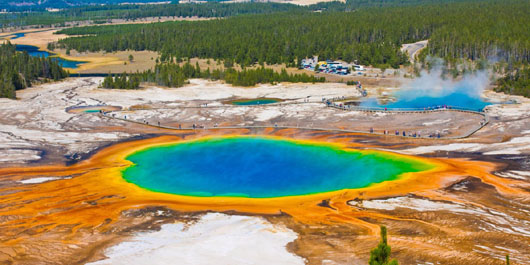by WorldTribune Staff, October 13, 2017
The supervolcano at Yellowstone National Park could erupt sooner than previously expected, researchers at Arizona State University said.
If it were to blow, the supervolcano would likely destroy mankind.

The researchers, Hannah Shamloo and Christy Till, analyzed minerals in fossilized ash from the most recent eruption and discovered that changes in temperature and composition only took a few decades, much faster than the centuries previously thought, according to National Geographic.
“We expected that there might be processes happening over thousands of years preceding the eruption,” Till said in an interview with The New York Times.
The researchers said that if the supervolcano were to erupt, it would blast out 2,500 times more material than Mount St. Helens did in 1980 and could cover most of the contiguous U.S. in ash, possibly putting the planet into a volcanic winter.
Yellowstone appears to burst roughly once every 700,000 years. The most recent was 640,000 years ago, with other events 1.3 million years ago and 2.1 million years ago.
In June, the Yellowstone supervolcano was hit with more than 400 earthquakes in one week, though researchers cautioned it was nothing nothing to be alarmed about.
While Shamloo told the Times that more research needed to be done before a definite conclusion could be drawn, almost everyone who studies the supervolcano says that, as of now, there is no way of knowing exactly when the next big blast will happen.
For its part, the U.S. Geological Survey puts the rough yearly odds of another massive Yellowstone blast at 1 in 730,000.
So, how does Yellowstone rank in terms of apocalyptic near-future possibilities? According to NASA, supervolcano eruptions are a bigger danger to life on Earth than any asteroid.
NASA, however, said it has a plan to neutralize supervolcano threats. It would cost approximately $3.4 billion and involves drilling down just over 6 miles into the volcano in order to release heat and hopefully avoid a violent eruption.
Subscribe to Geostrategy-Direct __________ Support Free Press Foundation
